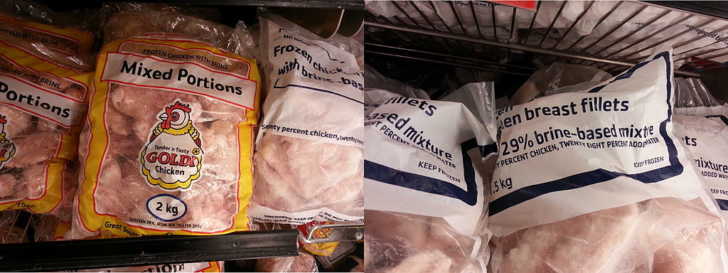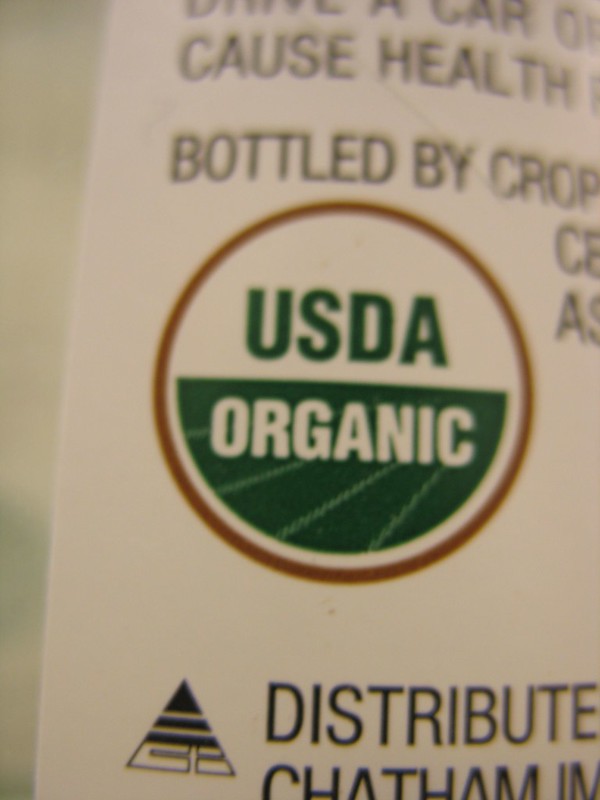
Back in the day, there were only a few options available when it came to staples like meat, flour, and sugar. Now, we have an overwhelming variety of options! It’s a good thing, seeing as people who are on restricted diets can still eat their favorite foods, but it can be confusing for the rest of us! Find out what you should be looking for when buying chicken, and see what all the different options mean.
What Fresh Chicken Looks Like

Before diving into the labels and classifications, let’s start with the basics. What should good chicken look like? According to chef Bart Pickens, “The skin should be a yellow tint and the meat should be pinkish and natural-looking. Good, fresh chicken should not have an odor. [Chicken] breasts should be light pink with little fat, and thighs should be dark pink with some fat.”
Labels To Look Out For

What do all of the labels mean, and what should you be looking for? According to top chefs, one of the most important, yet overlooked labels is the Halal stamp. Even if you’re not seeking out this symbol for religious reasons, chicken that has this stamp is sure to be fresh, as well as humanely farmed. Another thing to look for is grass-fed chicken vs. corn-fed chicken. Grass-fed meat, whether chicken or beef, has more nutrients and less fat than meat fed with corn or other grains.
Buy Fresh

If you’re feeding a crowd or stocking up on groceries, buying frozen chicken in bulk is no doubt easier and much more cost-effective than buying fresh chicken. However, if you’re swinging by the store to pick up chicken for dinner, make sure to grab the fresh stuff. Fresh chicken has never been frozen – meaning it’s internal temperature has never gone below 26°.
Why does that matter? Meat that is frozen and then thawed will have a different, tougher texture to it. Plus, the water content is different, which can often lead to dry chicken once it’s thawed and cooked.
Free-Range Vs. Pasture-Rasied

“Free-range” is one of those terms that gets thrown around a lot, but what does it mean? According to the USDA, chicken can be labeled “free-range” if the producer can prove the chickens have access to the outdoors. Why is this important? According to chef Michael Lewis, “The more humane the chicken was raised and butchered, the less stress they endure and thus the more pristine the meat.”
“Pasture-raised” or “farm-raised” has a far less precise definition, and in fact, wasn’t regulated by the FDA until 2019. Most chicken is raised in a farm or pasture of sorts, so labeling meat this way isn’t helpful.
Hormones & Anitbiotics

The USDA has not approved hormones to be used at any point in the process of raising or butchering chickens, therefore, the “No added hormones” label is effectively pointless. Good marketing? Yes. Helpful information? Not so much.
The “No antibiotics” label, on the other hand, is much more important. Antibiotics can be used when raising chickens, which is important for a few reasons. First, the FDA and the CDC both claim added antibiotics in meat products can cause human resistance to important drugs and medications. Secondly, the FDA only recently started regulating the use of antibiotics, which means they are still in the beginning stages of figuring out what level of antibiotics is harmful. It’s best just to steer clear of anything not labeled “No antibiotics!”
USDA Organic

Food products that have this label have met the USDA standards for organic foods. Some people mistakenly believe the USDA Organic label on chicken is associated with cruelty-free raised and butchered chickens, but that’s not the case. For chicken, the USDA Organic standard simply means it was produced with no genetic engineering.
That’s all well and good, but what do the experts say about it? Surprisingly, both chefs and nutritionists are split on the matter. Some chefs swear that organic meat tastes better, while others say it lacks flavor. Nutritionists are also divided. Some say there are numerous benefits of organic chicken, while others aren’t so convinced. At the end of the day, this one is up to you and your preferences.
Find out what else you should know before your next trip to the grocery store in the video below!













